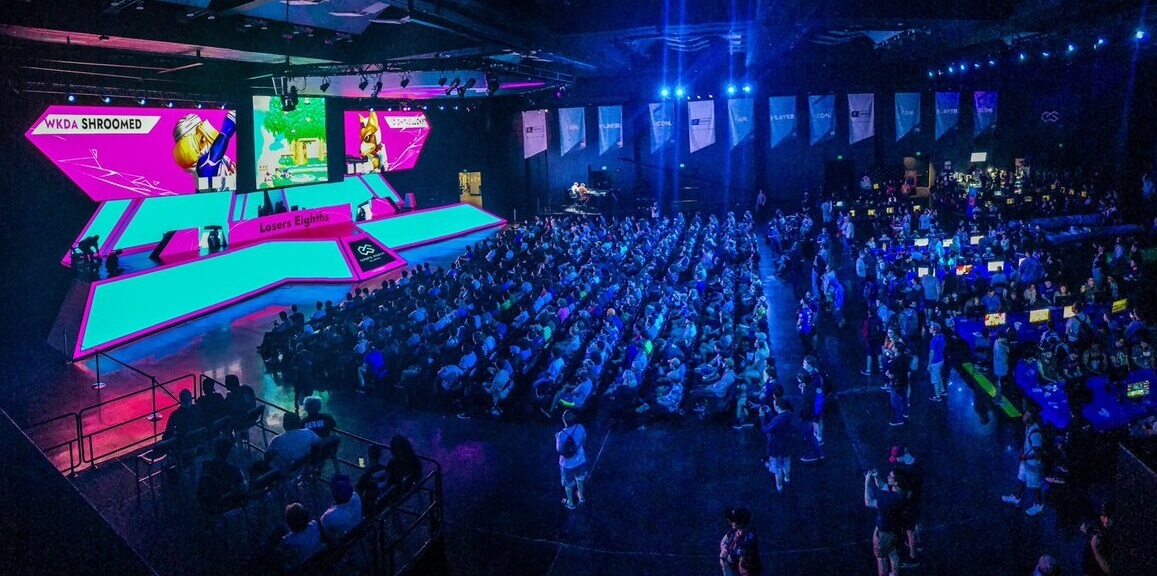How to turn video games from entertainment into the pot of gold? While many of us still take the digital world as something unreal, others have already derived quite substantial profits from the esports rage. Or do you belong to retrogrades who believe that playing video games is a wing-ding for geeks?
According to recent data, the global esports audience has experienced significant growth, expanding from 435.7 million viewers in 2020 to 532.1 million in 2022. Projections indicate that this number will surpass 640.8 million by 2025.
This surge in viewership underscores the increasing popularity of competitive gaming. Contributing factors include technological advancements, the rise of streaming platforms, and the widespread adoption of internet cafe software. Such software enables gaming centers worldwide to offer seamless experiences for both players and spectators, further fueling the industry’s expansion.
The Biggest Esports Arena in the World: Singapore Indoor Stadium
The Singapore Indoor Stadium holds the title of one of the largest esports venues globally, with a seating capacity of 12,000. This stadium hosted several major esports events, including The International 11 (Dota 2), where fans from around the world gathered to watch the best teams compete for millions of dollars. Its cutting-edge design, large capacity, and state-of-the-art facilities make it an ideal venue for massive esports events.
Both Singapore Indoor Stadium and The Arthur Ashe Stadium are notable venues, but they serve different purposes and have varying suitability for esports events:
Singapore Indoor Stadium

- Location: Singapore
- Capacity: Approximately 12,000 seats
- Usage: A versatile venue that has hosted esports events like the Dota 2 International 2022 Southeast Asia qualifiers, alongside concerts and sports events.
- Suitability for Esports: Well-suited for esports with its modern facilities and centralized location in Southeast Asia, making it a hub for international gaming tournaments.
Arthur Ashe Stadium

- Location: New York, USA
- Capacity: Around 23,771 seats
- Usage: Primarily known for hosting the US Open (tennis), but it has also been adapted for esports events like the Fortnite World Cup.
- Suitability for Esports: While not originally designed for gaming, its large capacity and global recognition make it an appealing venue for marquee esports events. However, its layout is more challenging for gaming audiences compared to purpose-built arenas.
Which is Better for Esports?
- Singapore Indoor Stadium is more flexible and esports-friendly due to its design and previous use in gaming events.
- The Arthur Ashe Stadium offers a larger audience capacity but may require additional adaptation for optimal esports setups.
Top 10 Biggest Esports Arenas in the World
- Singapore Indoor Stadium – Singapore – 12,000 capacity
- Mercedes-Benz Arena – Shanghai, China – 18,000 capacity (adapted for esports with flexible seating)
- LCS Studio – Los Angeles, USA – Up to 400 (League of Legends)
- Gwangalli Beach Arena – Busan, South Korea – 13,000 capacity (temporary venue for large events)
- Staples Center – Los Angeles, USA – 20,000 capacity (for events like League of Legends World Championships)
- Arthur Ashe Stadium – New York, USA – 23,000 capacity (used for Fortnite World Cup finals)
- Barclays Center – Brooklyn, USA – 19,000 capacity (CS, Overwatch League)
- Esports Stadium Arlington – Arlington, USA – 2,500 capacity (dedicated esports venue)
- Mall of Asia Arena – Manila, Philippines – 15,000 capacity (Dota 2’s Manila Major)
- Mercedes-Benz Arena – Berlin, Germany – 17,000 capacity (League of Legends World Championships)
These arenas have hosted some of the biggest esports tournaments in the world, helping to elevate the visibility and legitimacy of esports on a global scale.
Note: Some information about these arenas may vary, as many of them are multifunctional venues primarily designed for traditional sports. Their seating capacities, layouts, and facilities might differ depending on the specific event they are hosting, whether it’s an esports tournament, a sports match, or another large-scale event.

It is true that the International Olympic Committee is still debating whether to include esport contests in its list of disciplines, but it is also the fact that China, South Korea, Italy, Russia, Finland and several other countries have officially recognized it.
However, the most popular tournaments don’t really need this recognition to gather huge audiences and awe their fans with multi-million prize pools. Specifically, The International 2019 stole the spotlight with $34,000,000 awarded to gamers. And for your reference, the largest esports crowd was collected a long while ago — 120,000 fans arrived at Gwangalli Beach in Busan to watch the StarCraft finals in 2005.
Nowadays, beaches are no longer the choice when it comes to arranging video game competitions. These events are held either fully online or over local area networks (LANs), with players gathering at specifically equipped sites. Currently, there aren’t many dedicated venues constructed exclusively for this purpose worldwide, so organizers often use all sorts of stadiums and convention centers that can be modified accordingly. To streamline operations in such settings, tools like internet cafe timer software for Windows 10 are frequently employed, ensuring efficient management of gaming sessions and creating a smooth experience for participants and organizers alike.
Sure, existing facilities should be retrofitted wisely to fit the specifics of esports competitions, but we have plenty of shining examples of how it can be done in the real world. And here is our top list of arenas, ranged by their capacity, to inspire future hosts and organizers.

This venue cannot surprise you with its huge capacity either, but it really stands out from the crowd as the only facility designed specifically for esports on this list. It opened its doors in 2018 and welcomed its first international-level competition right off the bat. It was the final stage of the Esports Championship Series by FACEIT for CS:GO, where Astralis grabbed the biggest part of a $750K prize pool. The following year, Astralis returned to the spot to win again in the $500K worth contest. Along with premier competitions, the venue serves smaller events, including Madden NFL, Fortnite, Valorant, and some other tournaments.
























